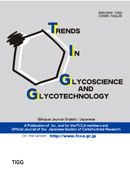
TRENDS IN GLYCOSCIENCE AND GLYCOTECHNOLOGY
metrics 2024
Exploring the Frontiers of Glycoscience and Glycotechnology
Introduction
TRENDS IN GLYCOSCIENCE AND GLYCOTECHNOLOGY, a reputable journal published by GAKUSHIN PUBL CO, serves as an essential resource for researchers and professionals engaged in the evolving fields of glycoscience and glyotechnology. Established in 1989, this journal has progressively focused on stimulating discussions and disseminating pivotal findings that impact various applications in biochemistry and organic chemistry. With an impressive converge covering decades up to 2024, the journal has carved a niche within the scientific community, despite currently being classified in the lower quartiles (Q4) for its respective categories in 2023. This designation underscores the potential for growth and enhanced visibility within research networks. While it currently operates under a subscription-based model, TRENDS IN GLYCOSCIENCE AND GLYCOTECHNOLOGY remains committed to fostering innovation and interdisciplinary collaboration, providing a critical platform for the exploration of glycan structures and functions. Located in Tokyo, Japan, the journal invites contributions that contribute to the future direction of glycoscientific research and its applications.
Metrics 2024
 0.13
0.13 0.20
0.20 0.40
0.40 38
38Metrics History
Rank 2024
Scopus
IF (Web Of Science)
JCI (Web Of Science)
Quartile History
Similar Journals
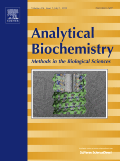
ANALYTICAL BIOCHEMISTRY
Transforming Ideas into Impactful DiscoveriesANALYTICAL BIOCHEMISTRY is a leading journal dedicated to publishing high-quality research in the fields of biochemistry, biophysics, molecular biology, and cell biology. Published by Academic Press Inc. Elsevier Science, this journal has been a cornerstone of scientific communication since its inception in 1960, with a wide-ranging scope that encompasses a variety of analytical techniques and biochemical applications. Although not an Open Access journal, it boasts a solid reputation with a 2023 ranking in the 3rd quartile for both Biochemistry and Biophysics, and it continues to play a significant role in advancing knowledge and fostering collaboration among researchers. With its comprehensive editorial standards and rigorous peer-review process, ANALYTICAL BIOCHEMISTRY serves as an essential resource for professionals and students aiming to stay abreast of the latest developments and methodologies in the biochemical sciences. Its indexed presence in Scopus highlights its impact and relevance, emphasizing the journal’s commitment to disseminating breakthrough findings that contribute meaningfully to scientific discourse.
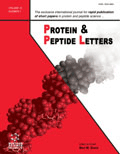
PROTEIN AND PEPTIDE LETTERS
Pioneering pathways in therapeutic applications of proteins and peptides.PROTEIN AND PEPTIDE LETTERS is a prominent peer-reviewed journal published by Bentham Science Publishers Ltd, specializing in the dynamic fields of biochemistry and structural biology. With an ISSN of 0929-8665 and a corresponding E-ISSN of 1875-5305, the journal has been a pivotal platform for researchers since its inception in 1994. Spanning various aspects of protein and peptide research, it aims to disseminate groundbreaking findings that enhance our understanding of molecular mechanisms and therapeutic applications. Although categorized in the Q3 quartile for biochemistry and medicine, and Q4 in structural biology within the 2023 metrics, it remains a valuable resource in the academic arena, offering insight into the latest research and advancements. As the journal converges towards its 2024 milestone, it continues to reflect the evolving landscape of molecular research. While it currently does not offer open access, the accessibility to its impactful content is essential for students, professionals, and researchers invested in these critical scientific disciplines.
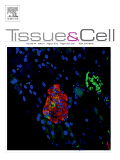
TISSUE & CELL
Connecting Research to Real-World ImpactTISSUE & CELL is a prominent academic journal, published by CHURCHILL LIVINGSTONE, that has been at the forefront of research in the fields of cell biology, developmental biology, and miscellaneous areas of medicine since its inception in 1969. With a strong focus on high-quality research, TISSUE & CELL has established itself within the academic community, holding a Q3 ranking in both Cell Biology and Developmental Biology, and a Q2 ranking in Medicine as of 2023. The journal aims to disseminate significant findings that contribute to the understanding of tissue structure and function, helping to bridge the gap between basic biological research and clinical applications. While it operates on a subscription basis and does not currently offer Open Access options, the journal remains a vital resource for researchers, professionals, and students interested in cutting-edge developments in the biological sciences. The journal's address is located in the scenic city of Edinburgh, further establishing its academic heritage in the United Kingdom.

Biomolecular NMR Assignments
Fostering collaboration in the realm of biomolecular NMR research.Biomolecular NMR Assignments is a prominent academic journal dedicated to advancing the field of biomolecular nuclear magnetic resonance (NMR) spectroscopy. Published by SPRINGER, this journal aims to provide a platform for researchers to share significant findings, methodological advancements, and in-depth analyses related to protein structure, dynamics, and interactions through NMR techniques. Although not currently open access, it serves as a valuable resource for those in the fields of Biochemistry and Structural Biology, having established a respectable impact factor reflected in its category rankings within these disciplines. With its coverage spanning from 2007 to 2024, Biomolecular NMR Assignments continues to facilitate the exchange of knowledge among professionals and students, contributing to the growth and enhancement of contemporary scientific inquiry. Explore the intricacies of biomolecular studies in the Netherlands and beyond, where critical insights into molecular behavior and function converge.
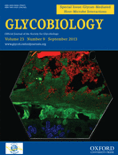
GLYCOBIOLOGY
Pioneering Research in GlycobiologyGLYCOBIOLOGY is a premier journal published by Oxford University Press Inc., focusing on the multidisciplinary field of glycoscience. With an ISSN of 0959-6658 and an E-ISSN of 1460-2423, this journal has established itself as an essential resource for researchers, professionals, and students interested in the biochemical aspects of glycan structures, functions, and interactions. The journal boasts a Q1 rank in the biochemistry category for 2023, placing it in the top-tier of scholarly publications, and achieving a percentile rank of 71st out of 438 in the Scopus database for biochemistry, genetics, and molecular biology. Covering integral aspects of glycobiology since its inception in 1990, GLYCOBIOLOGY offers a robust platform for the dissemination of novel research findings, reviews, and methodologies that advance the understanding of glycan-related processes and their implications in health and disease. Researchers can access high-quality content that not only promotes scientific discourse but also pushes the boundaries of knowledge in this vital field.

Molbank
Exploring the Frontiers of Biochemistry and BeyondMolbank is an open-access journal published by MDPI, dedicated to the fields of Biochemistry, Organic Chemistry, and Physical and Theoretical Chemistry. Established in 2002, this journal has served as a vital platform for the dissemination of research findings, where researchers and professionals share original articles focusing on molecular chemistry, synthesis, and related studies. With a commitment to open access, Molbank enables global access to scientific knowledge, fostering collaboration and innovation among scientists. While currently categorized in the fourth quartile for its field rankings, it provides a unique opportunity for emerging scholars to contribute to and engage with the scientific community. The journal is based in Switzerland, operating from its office at ST ALBAN-ANLAGE 66, CH-4052 BASEL, SWITZERLAND, and continues to attract submissions until 2024. Researchers, students, and professionals looking to expand their knowledge and participate in the dialogue of current molecular chemistry can benefit significantly from engaging with the content published in Molbank.
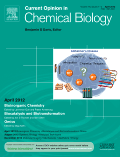
CURRENT OPINION IN CHEMICAL BIOLOGY
Fostering Scholarly Dialogue in BiochemistryCurrent Opinion in Chemical Biology, published by Elsevier Science Ltd, stands at the forefront of its field, specializing in analytical chemistry and biochemistry. With an impressive impact factor and ranked in the top quartile (Q1) for both its disciplines, this journal consolidates significant advancements and perspectives in chemical biology from 1997 to 2024. Its Scopus rankings reflect its prestigious standing, with the journal positioned at #11 in Analytical Chemistry and #32 in Biochemistry, indicating a remarkable percentile standing of 93rd and 92nd, respectively. With a commitment to highlight cutting-edge research and foster scholarly dialogue, Current Opinion in Chemical Biology serves as an invaluable resource for researchers, professionals, and students seeking to stay abreast of the latest developments and innovations in the chemical biology landscape.

JOURNAL OF ANALYTICAL CHEMISTRY
Empowering Researchers in Analytical ExcellenceJOURNAL OF ANALYTICAL CHEMISTRY, published by PLEIADES PUBLISHING INC, stands as a pivotal resource in the field of analytical chemistry, offering an innovative platform for researchers, professionals, and students to advance their knowledge and contribute to the discourse within the discipline. With an ISSN of 1061-9348 and an E-ISSN of 1608-3199, this journal features a focused exploration of analytical methodologies, instrumentation developments, and applications across various domains, contributing to practical and theoretical advancements in the field. Currently ranked in the Q3 category in Analytical Chemistry with a Scopus rank of #111 out of 156, it provides critical insights and innovation strategies for professionals aiming to enhance their analytical capabilities. Access to the journal is through standard subscription models, and it covers an extensive range of topics pertinent to the discipline from 1996 to 2024. Engage with the JOURNAL OF ANALYTICAL CHEMISTRY to be part of a vibrant research community dedicated to push the boundaries of analytical practices.
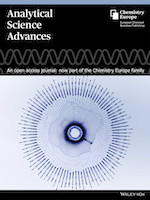
Analytical Science Advances
Pioneering Research for Tomorrow's Analytical ChallengesAnalytical Science Advances is a dynamic journal published by WILEY, dedicated to the ever-evolving field of analytical chemistry. With an ISSN of 2628-5452, this open-access platform aims to disseminate high-quality research and insightful reviews that push the boundaries of analytical methodologies and instrumentation. Since its inception in 2020, the journal has gained traction, securing a commendable Q2 ranking in 2023 within its category, highlighting its significance in the scientific community. Currently positioned at Rank #68 out of 156 in Scopus' analytical chemistry category, it boasts a 56th percentile ranking, reflecting its contributions to advancing analytical techniques. Researchers, professionals, and students will find this journal an invaluable resource for keeping abreast of the latest developments, emerging technologies, and innovative approaches in analytical science, ensuring the journal's relevancy and influence in shaping future discoveries.
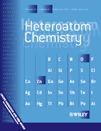
HETEROATOM CHEMISTRY
Connecting Ideas: Your Gateway to Heteroatom DiscoveriesHeteroatom Chemistry is a prominent open-access journal dedicated to advancing the field of heteroatom chemistry, with a particular focus on the chemistry of elements other than carbon in organic compounds. Published by Wiley-Hindawi, this journal provides researchers, professionals, and students with a platform to disseminate and access novel research findings related to the synthesis, properties, and applications of heteroatom-containing compounds. Since its inception in 1990 and gaining open access status in 2019, the journal has fostered academic collaboration and innovation throughout its converged years, although it currently holds a category quartile ranking of Q4 in Chemistry (miscellaneous) and ranks #319 out of 408 in general chemistry within Scopus. With its commitment to high-quality research and broad accessibility, Heteroatom Chemistry is poised to be an essential resource for anyone looking to explore the rich and varied applications of heteroatom chemistry in diverse scientific fields.